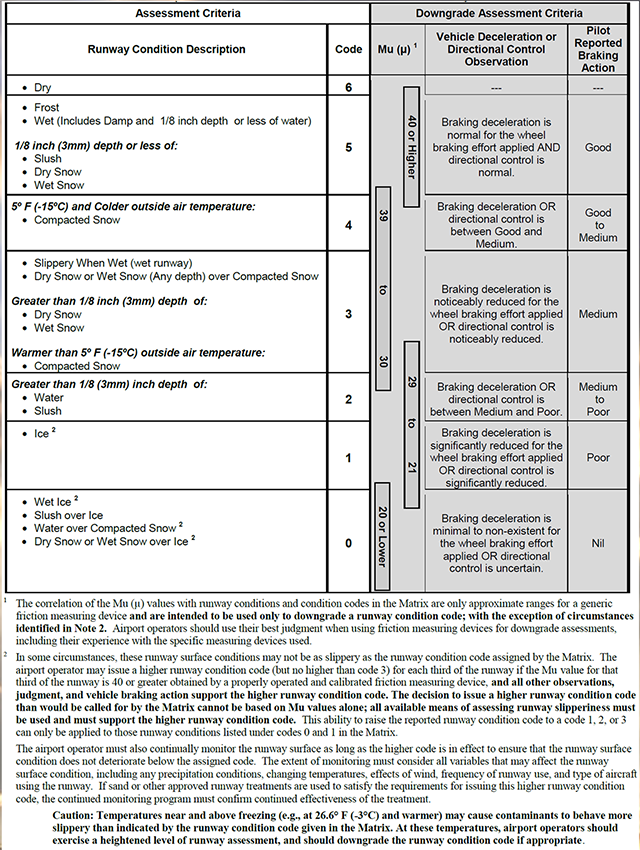For those of us who grew up on RCRs (Runway Condition Readings) and Mus, the Runway Condition Assessment Matrix (RCAM) may seem to be more of the same. But it isn't.
— James Albright

Updated:
2018-03-20
For a history, see the excellent A article by Pete Coombs. You will normally hear Runway Condition Codes in groups of three, meaning the first, middle, and last parts of the runway. It will be spoken as "Runway condition five, five, five," or something close to that. There is apparently more science to these than there was in the past.

Runway Condition Codes, from RCAM.

- The FAA is implementing the use of the Runway Condition Assessment Matrix (RCAM) which will be used by airport operators to perform assessments of runway conditions and by pilots to interpret reported runway conditions. The RCAM is presented in a standardized format, based on airplane performance data supplied by airplane manufacturers, for each of the stated contaminant types and depths. The RCAM replaces subjective judgments of runway surface conditions with objective assessments tied directly to contaminant type and depth categories.
- The airport operator will use the RCAM to assess paved runway surfaces, report contaminants present, and through the assistance of the Federal NOTAM System, determine the numerical Runway Condition Codes (RwyCC) based on the RCAM. The RwyCCs apply to paved runways and may be the same or vary for each third of the runway depending on the type(s) of contaminants present. RwyCCs will replace Mu reports which will no longer be published in the NOTAM system. Additionally, contaminant coverage will be expressed in percentage terms for each third of the runway, beginning at the Runway end from which it was assessed. This is typically the runway end primarily in use.
- Pilot braking action reports will continue to be solicited and will be used in assessing braking performance. Effective October 1, 2016, the terminology ”Fair” will be replaced by “Medium” and pilot braking action reports will now describe conditions as Good, Good to Medium, Medium, Medium to Poor, or NIL. This will harmonize the NAS with ICAO standards.
- Additionally, it will no longer be acceptable for a federally obligated airport to report a NIL braking action condition. NIL conditions on any surface require the closure of that surface. These surfaces will not be opened until the airport operator is satisfied that the NIL braking condition no longer exists.
Source: SAFO 16009
References
(Source material)
FAA, Runway Condition Assessment Matrix, Undated
Safety Alert for Operations (SAFO) 16009, Runway Assessment and Condition Reporting, Effective October 1, 2016